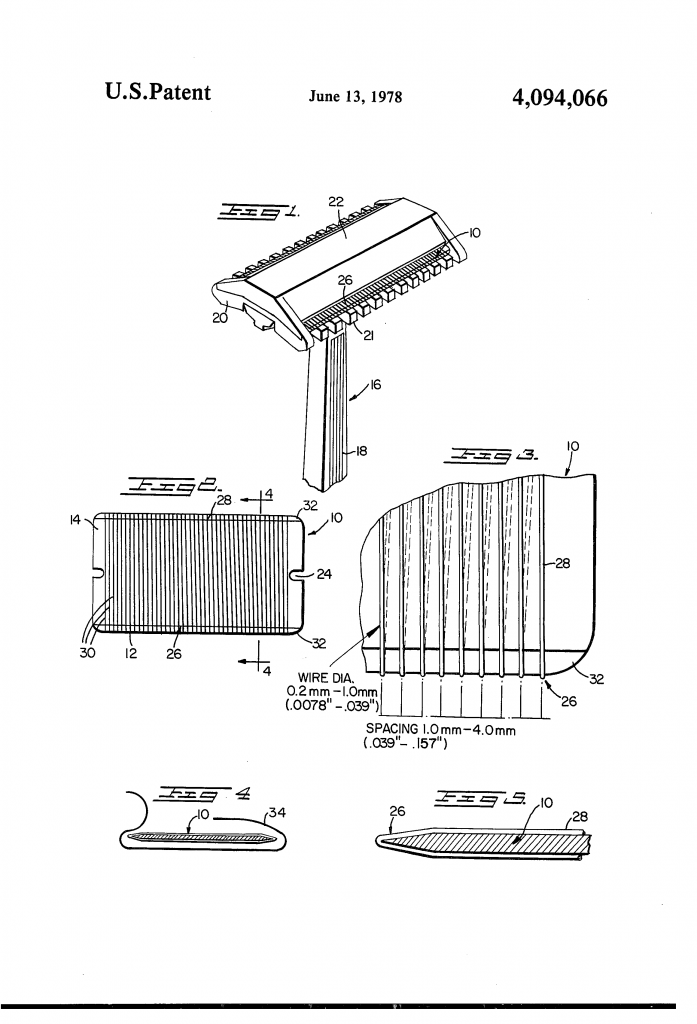A razor blade is – to no one’s surprise – razor sharp. But in some causes, like when you shave someone else, you want a blade less likely to cut. Cut skin, that is. A safety blade, if you like. There have been many such blades patented over the years, like R E Thompson’s 1924 toothed blade and A W Ferrara’s 1966 safety blade. And this one, Donald S Daniel, Jr.’s 1978 patent for a surgical razor blade.
Like before, the idea was to make the blade less likely to cut skin by giving it an integral guard. Donald did it by wrapping a thin, flexible wire around a rectangular blade. Or in the words of the patent:
A surgical razor blade with an integral guard for its cutting edge in the form of a plurality of spiral windings of thread being of flexible material capable of being pressed against the blade cutting edge under pressure in shaving contact with the normally unshaven areas of the skin without severance of the thread…
From US patent 4,094,066
In short, a blade protected by a wire the blade can’t cut. The patent do go into a bit of details on the thickness of the wire (0.2mm to 1.0mm) and the distance between the windings (1.0mm to 4.0mm). This would, according to the patent, allow the shaver to select the best blade for the hair and area to be shaved.
For extra safety, the corners of the blade were rounded so you couldn’t nick the shavee with a sharp point.

The razor shown in the patent, aptly described in the patent as a “suitable holder” is fairly conventional. A handle, a bottom plate with a guard, and a top plate. It would differ form a regular three piece though, since the blade did not have a slot. Instead the blade would have to index of two notches cut at each end of the blade. How the top plate would connect to the bottom plate isn’t explained in the patent. However, judging by the drawing, there seem to have been a bayonet locked pin operated by a tiny lever on either side. A little fiddly, but probably okay for surgical use.
I see no reason why Donald’s surgical razor blade shouldn’t work as intended. At least one conceptually similar blade is for sale today, in the form of the Feather Artist Club ProBlade. The major hurdle I can see with the blade is that it won’t work in a regular razor – unlike Thompson’s and Ferrara’s blades.
You can read the full patent on Google patents. Is you like this sort of things, why not check out some of my other posts on the subject of old patents?

Pingback: Surgical razor blade with integral guard - Razors n Blades the shave that saves